Agile engineering practices are foundational for successful Scrum implementation and ensuring your team consistently delivers a Product Increment at the end of every Sprint. In this guide, we’ll walk through a practical 8-step approach to help your team adopt these essential practices and make them stick. Some steps you can facilitate yourself, while others may require support from a technical coach to guide your team toward true technical excellence.
1. Start With Hands-On Training
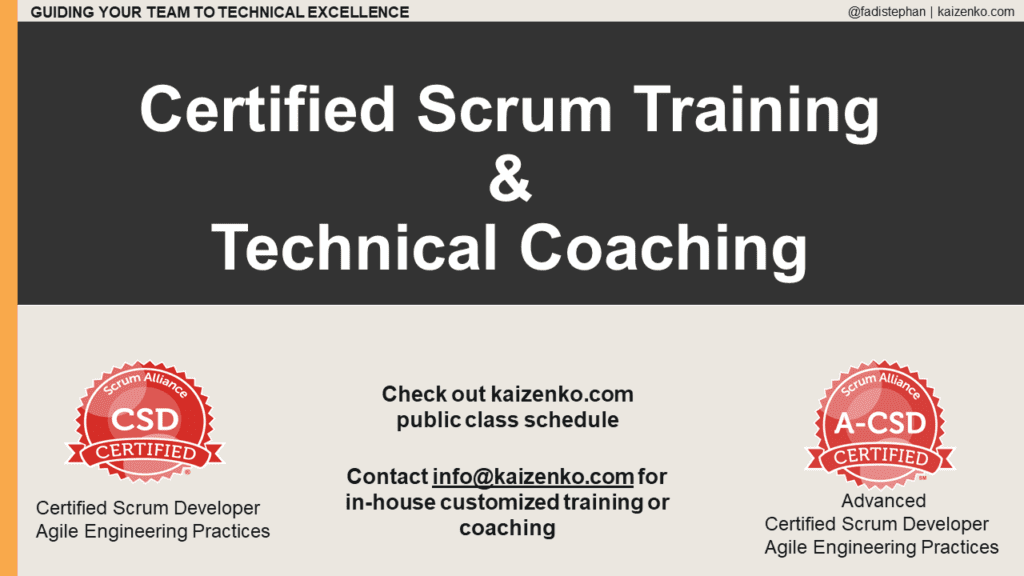
For teams to successfully adopt Agile engineering practices, training is the necessary first step. Programs like the Certified Scrum Developer – Agile Engineering Practices course introduce these practices through practical coding exercises, with over 70% of class time spent building applications using these techniques.
Training serves two critical purposes. First, it exposes team members to these practices, which is fundamental. More importantly, it creates those valuable “aha moments” when team members truly grasp the benefits. In our CSD classes, this typically happens on the second day, when participants start connecting concepts to their actual work environment and visualizing how they’ll apply these practices to their own codebase.
Without these realizations, adoption simply won’t happen. However, training alone isn’t sufficient—change is challenging, and follow-up technical coaching is essential. The approach detailed in the following steps is based on a variation of the Samman coaching method.
2. Allocate Dedicated Improvement Time
A common misconception is that developers can attend training and immediately return to spending 100% of their time building the Product Increment. This expectation is unrealistic.
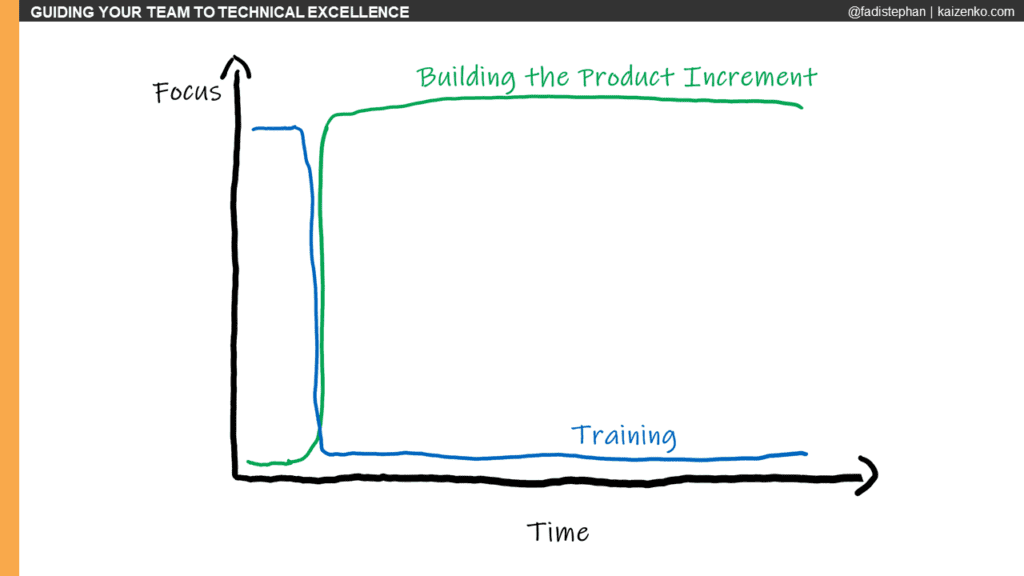
In reality, developers on effective Scrum teams split their time between:
- Building the Product Increment – Working on current Sprint items
- Product Backlog Refinement – A critical ongoing activity throughout the Sprint
- Continuous Improvement – Working on retrospective action items and developing T-shaped skills
Teams that regularly fail to complete Sprint commitments are often not dedicating enough time to Product Backlog Refinement. Similarly, without investing time in continuous improvement, problems won’t magically disappear.
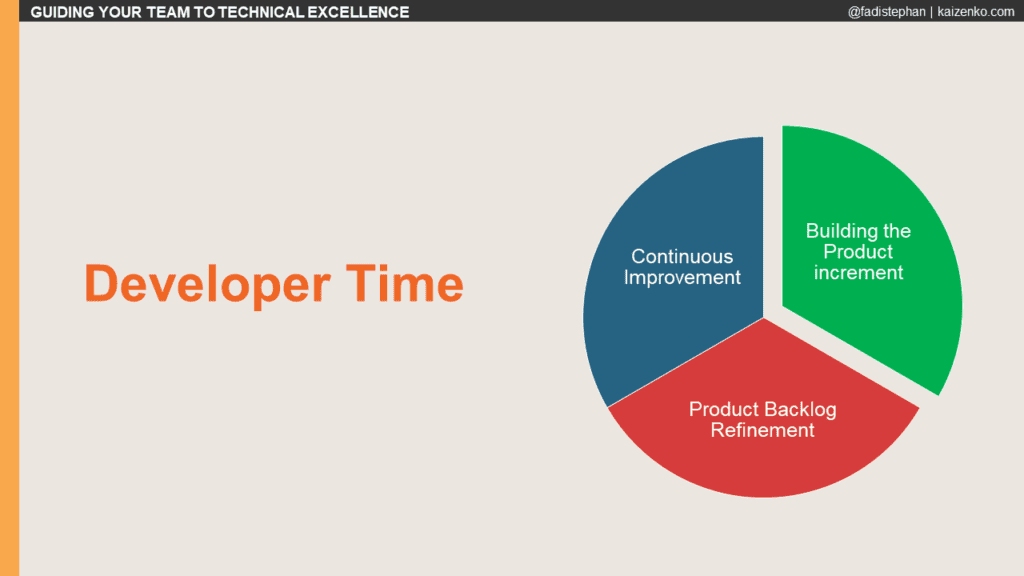
The time allocation between these activities varies with team maturity. New teams typically spend more time on refinement and improvement. As the product backlog stabilizes, refinement might decrease to 10-15% of team time. Another 10-15% should remain dedicated to continuous improvement. This means that work on the Product Increment might initially be just 30% of time, gradually increasing to 70-80%, but never reaching 100%.
Teams need a transition period after training before they can effectively build Product Increments—expecting immediate transformation is setting them up for failure.
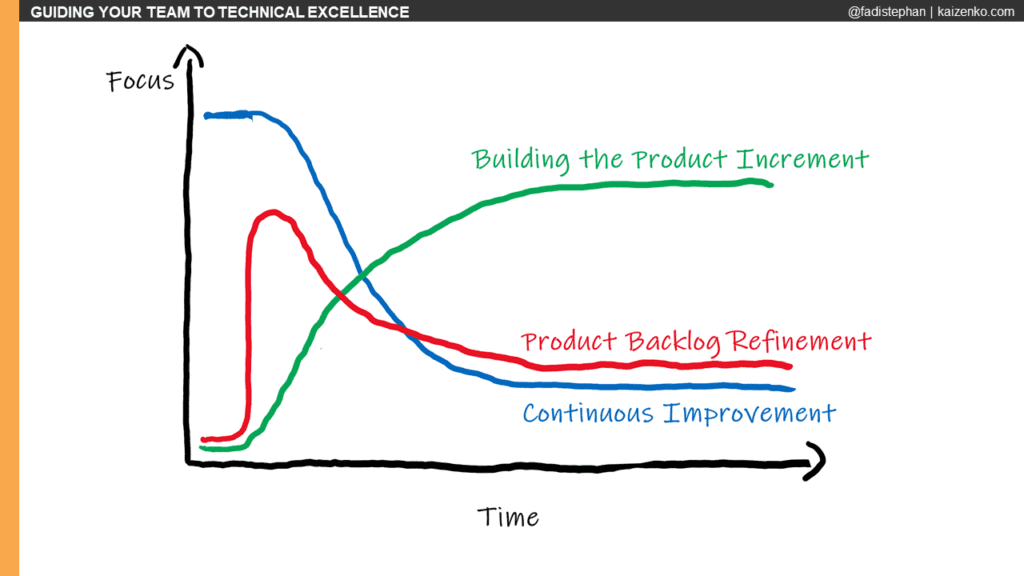
3. Enhance Quality Through Definition of Done
The Definition of Done is often confused with acceptance criteria, but they serve different purposes. While acceptance criteria tell us when a requirement is complete, the Definition of Done represents the team’s quality checklist.
Start by asking your team to list all activities required to move code from a developer’s machine to production. This includes environments, testing types, and approvals—each organization will have different requirements.
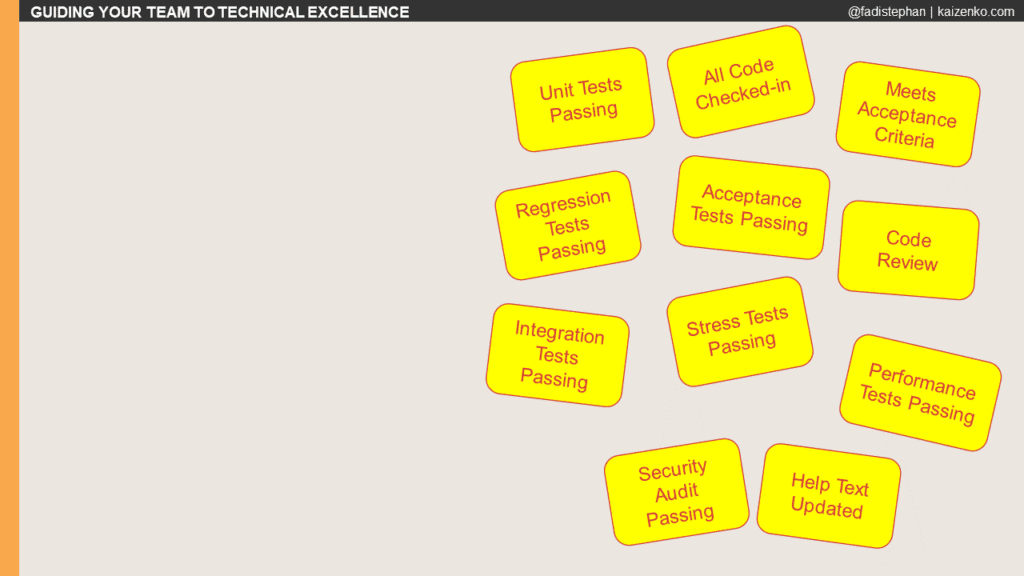
From this comprehensive list, identify which activities can be completed per Product Backlog Item. Some tasks may be too resource-intensive to perform for each item and might be done once per Sprint instead. Other activities might be even more demanding and only performed every few Sprints—this represents “Undone work.”
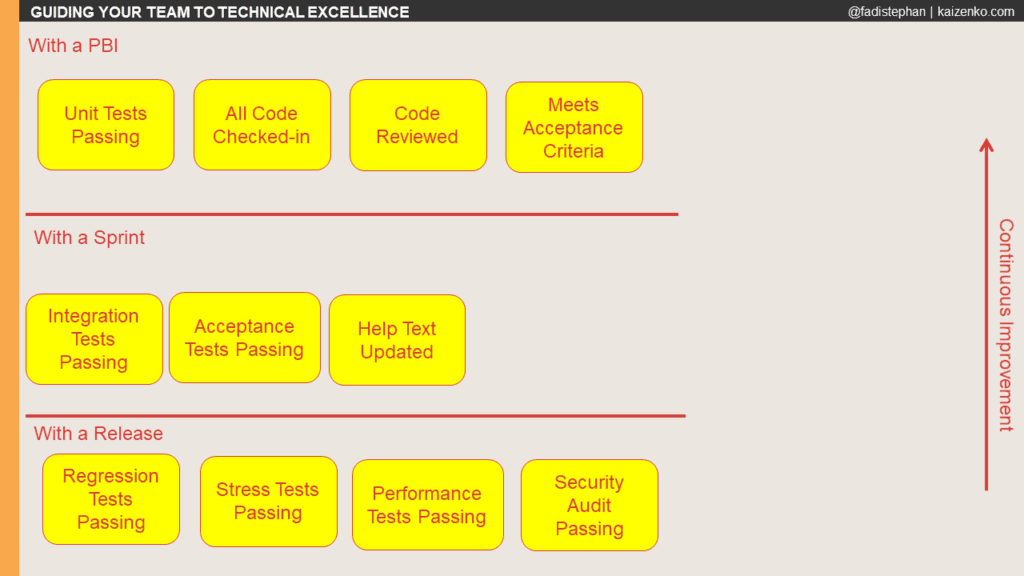
This realistic assessment becomes your team’s Definition of Done, making it transparent that the team cannot deliver a truly shippable Product Increment at Sprint’s end due to remaining tasks. If the Product Owner approves the Sprint output, additional time (potentially weeks or months) will be needed before actual delivery.
The Definition of Done should evolve through continuous improvement. Review it regularly (approximately every four retrospectives) and work to move items up from the release section into the Sprint. When no activities remain in the release section, you’ll have a high-functioning Scrum team capable of delivering shippable Product Increments each Sprint.
Some advanced teams push everything into the Product Backlog Item section, enabling multiple releases per Sprint or even per day. While impressive, the minimum goal should be eliminating the undone work section so all quality activities are completed within the Sprint.
For more guidance, check out our Definition Of Done Canvas template.
4. Build Skills Through Coding Dojos
Coding Dojos are dedicated learning sessions for practice, typically an hour per day. They’re necessary because applying newly learned concepts directly to messy production code is unrealistic.
Dojos provide a safe environment to reinforce training concepts—whether it’s pair programming, Test-Driven Development, design principles, identifying code smells, refactoring, or working with legacy code. These sessions prepare your team for situations they’ll encounter with production code later.
5. Create Meaningful Sprint Goals
Many teams skip creating Sprint Goals during planning, which turns them into individuals working on unrelated items rather than a collaborative unit.
Every Sprint should have a clear goal that moves the team one step closer to the Product Goal or vision. With a meaningful goal, the team focuses on collaboratively delivering a cohesive set of Product Backlog Items that provide value, rather than completing unrelated tasks that offer little value individually.
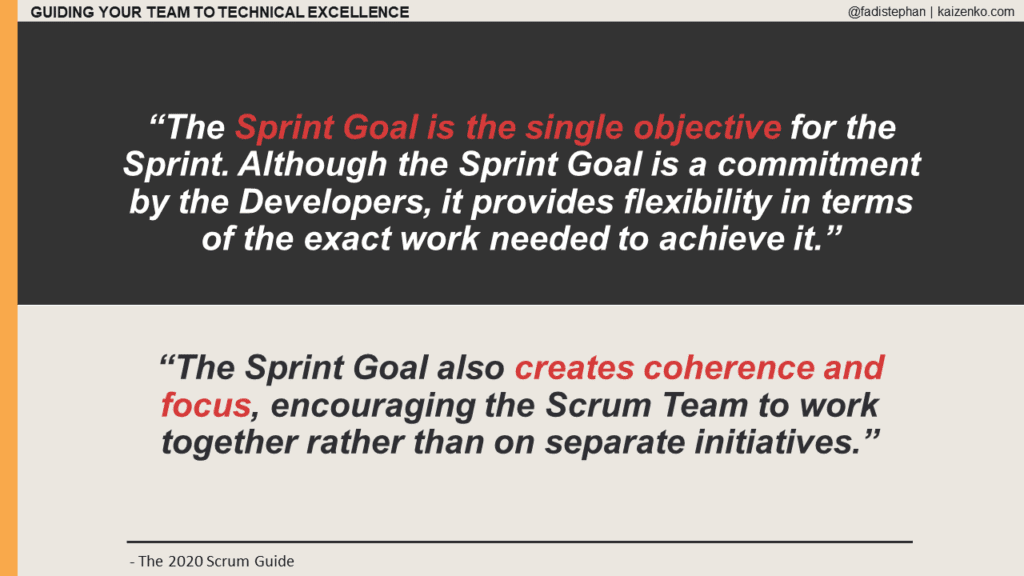
6. Practice Ensemble Programming
Once the Sprint Goal is established, implement mandatory ensemble programming sessions (2 hours daily) working on production code. During Sprint Planning, select a candidate Product Backlog Item that represents a vertical slice of functionality that can be built without handoffs, since the entire team participates.
This practice facilitates knowledge sharing across domain expertise, design approaches, technical skills, team norms, and code conventions. It reinforces collective ownership and collaboration toward achieving the Sprint Goal.
7. Implement Pair Programming
While ensemble programming is mandatory, pair programming on production code should be voluntary. During Sprint Planning, ask for volunteers to select Product Backlog Items suitable for pairing.
Encourage diverse pairs that mix skill levels (senior with junior), domain expertise, and technical specialties. This promotes knowledge sharing, improves quality, and breaks down silos within the team.
8. Take Ownership of CI/CD Pipelines
The key to effective Continuous Integration and Continuous Deployment is team ownership. Agility originally brought business and development together, while DevOps emerged to integrate operations into this collaboration.
The common practice of creating separate “DevOps teams” contradicts this principle by introducing handoffs from developers to a specialized team. True DevOps means having developers and operations professionals working side by side on the same team.
Your development team should own their pipeline. If they lack expertise, bring in specialists to transfer knowledge rather than doing the work for them. The goal is for the team to build, deploy, run, and maintain their own applications.
Build pipelines gradually, bringing in expertise as needed. Ensure knowledge spreads across the team through pairing and rotation so pipeline work isn’t siloed with a single person.
Implementation Schedule
Initially, dedicate one hour daily to Dojos, two hours to ensemble programming, and make pair programming voluntary for the remainder of the day. Implement this schedule for four days each week in a two-week Sprint, avoiding planning, review, and retrospective days.
Over time, reduce Dojo frequency to three times weekly, then twice, then once. I recommend maintaining at least weekly sessions, as there’s always something new to learn.
For ensemble programming, eventually transition from mandatory to voluntary participation. By then, the team will understand the benefits of collaboration versus working in silos and will naturally choose this approach based on upcoming work.
Implementing these eight steps systematically will guide your team toward technical excellence. The journey takes time and commitment, but the results—higher quality, faster delivery, and greater team satisfaction—make it worthwhile.
Want personalized guidance on implementing Agile engineering practices? Contact us to discuss how we can help your organization achieve technical excellence.
